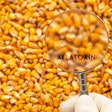
Weather patterns during the European summer have put the feed and livestock sectors on high alert for mycotoxins, according to Radka Borutova, DVM, PhD, business development manager with Nutriad. Aflatoxins are potent mycotoxins that reduce development, impair the immune system, and can cause cancer and death, she said.
“The heat wave in Europe in late June and early July of 2015 broke monthly and even a few all-time records. Hot and dry weather is associated with increased aflatoxin and fumonisin production by the fungi from Aspergillus and Fusarium species,” Borutova said in a press release, leading Nutriad to carry out a Mycotoxin Survey covering 60 locally produced maize samples from across Spain.
More than 400 analyses were conducted to test for the occurrence of the 7 mycotoxins most frequently found in agricultural commodities that are intended for animal feed production. The survey provided an insight into the incidence of aflatoxins (Afla), zearalenone (ZEN), deoxynivalenol (DON), T-2 toxin, fumonisin B1 (FB1), fumonisins B2 (FB2) and ochratoxin A (OTA) across all regions of Spain.
The results from the survey showed that 55 percent of the maize samples were contaminated with DON and 11 percent with AflaB1. Only 1.6 percent of the samples contained T-2 toxin.
The majority of wheat samples were contaminated with FB1 (90 percent) and FB2 (80 percent). Most of the analyzed mycotoxins were in concentrations regarded as medium, which means they were detectable but below EU recommended maximum levels. The highest concentrations of DON and FB1 were 6,500μg/kg and 11,500μg/kg, respectively.
Interestingly, 31.6 percent of the samples contained ZEN, a mycotoxin that adversely affects reproductive performance in breeding animals. Its maximum concentration measured was 990μg/kg, a significant level. As expected, only a few samples were contaminated with OTA, a mycotoxin that tends to develop during storage. One sample of maize exceeded the maximum EU permitted concentration of AflaB1 (20.2μg/kg).
“The maize mycotoxin survey conducted by Nutriad this year concluded that 2015 harvest of maize in Spain is of concerning quality,” according to Borutova.
Based on the results of this survey conducted immediately post-harvest, it appears that the 2015 maize crop in Spain is better than others have found in the U.S. but it is unsafe for inclusion in finished feed rations for all animal species.
Borutova says it is likely that this dramatic mycotoxin situation in Europe will continue into 2016. While the level of mycotoxin contamination may remain at the medium risk level, quality could deteriorate. Corn – the most important feed ingredient – will likely be contaminated with the mixture of DON, Afla and fumonisins. Higher incidence of Afla in 2015-16 will present a challenge mainly for dairy producers and production of aflatoxin M1-free milk. Fumonisins are highly toxic to swine and horses.
The last possible line of defense is the detoxification of mycotoxins in vivo. The addition of proven mycotoxin deactivators to animal feeds is a common method to prevent mycotoxicosis and is an effective strategy to keep the mycotoxin risk as low as possible. Borutova recommends the application of an effective mycotoxin deactivator to minimize the risks of adverse effects on animal health, performance, productivity and profit caused by mycotoxins.
In contrast to the results from Spain, the 2015 Nutriad Mycotoxin survey concluded that this year’s harvest of wheat in the U.K. and Ireland is very good quality in terms of mycotoxin contamination, and so can be considered safe for inclusion in finished feed for all farm animal species.

















